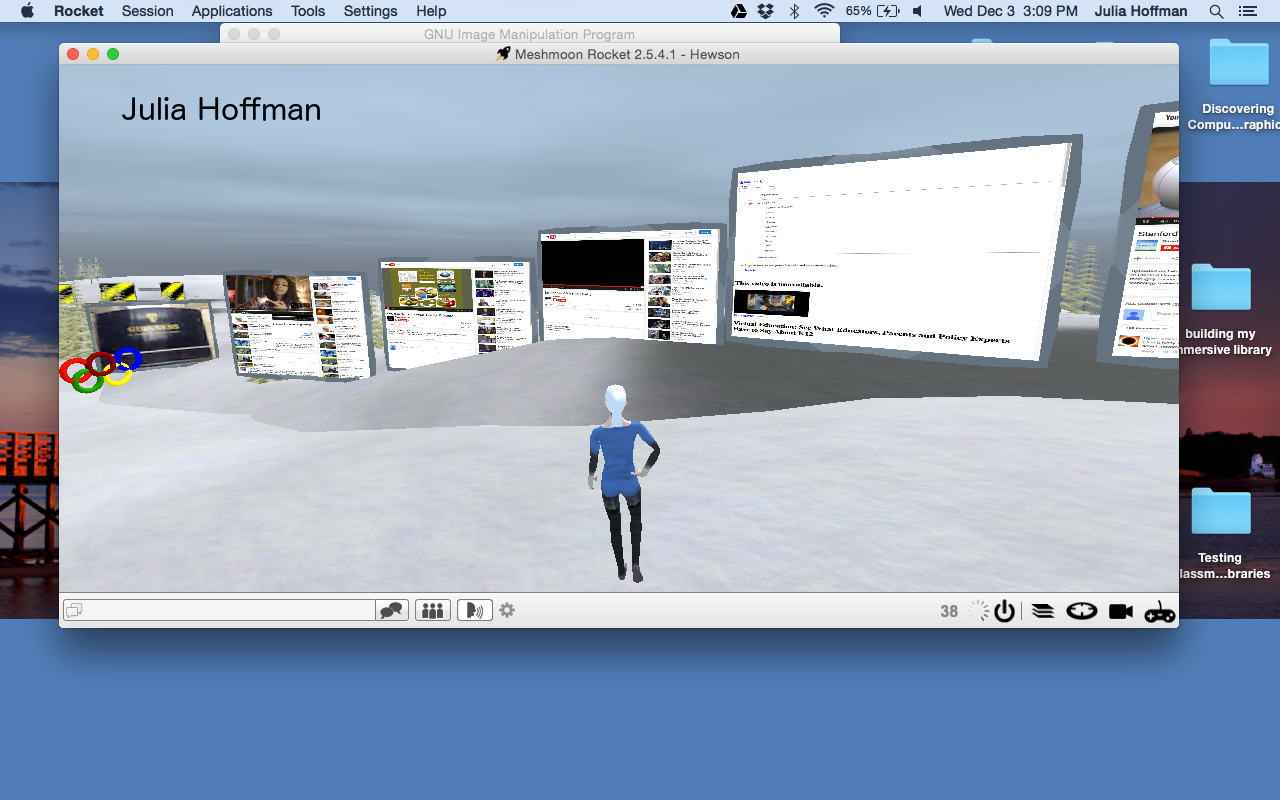Identity is a complicated concept in virtual worlds. What makes it so complicated is the avatar. You can make your avatar look like anything you want, from a regular person, to an animal, or create (like the snowman and robot in Meshmoon). What you select says a great deal about you. It conveys things about your personality, even if you think that your selection of a regular person avatar makes you ambiguous, it does not. Your true identity shows through no matter what mask you put forward in the virtual world.
Selecting a standard avatar could show shyness, because you are not going outside of the box, and selecting a wild avatar “says look at me”. People can also play a role that they would never be able to in real life, for example the South Korean professor from the CNN article “Identity in a Virtual World” chose a young girl for his avatar in Second life. That does not make him in any way strange or deviant, it just allows him a perspective that he would not otherwise be able to begin to understand.
People behave in virtual worlds the way that they do in real life. A shy person is not likely to initiate conversation with others in virtual worlds like Meshmoon or Secondlife just as he would not walk up to a stranger in real life and say hello. I also noticed in each of the assignments that people can be very mean to each other in Second Life. They swear and yell and those around them. This shocked me at first, because I didn’t understand how people could even get mad when playing a game like Secondlife. But upon further thought I realized that those people getting angry and instigating fights on Secondlife are likely not happy people in their real lives and they are acting as such.
Another thing I came to understand is how changing your avatar really does change how others act towards you. I used one avatar who was a typical attractive woman, and another who was a slightly overweight woman. Several people direct chatted me and said hi while I was the attractive woman, but nobody did when I was overweight. This did not surprise me. It makes sense that the standards of beauty translate virtually too.
Identity in a virtual world is complex. It is a combination of appearance, personality, and actions.
This is the same as the concept of identity in real life, which also is a combination of appearance, personality, and actions. Even if an online user chose to represent himself with an misleading avatar, his true personality will not change. What I have come to understand in this course (more through Secondlife than Meshmoon because there are more users to learn from on Secondlife) is that what people put forth is their identity. I does not matter if they are walking down a real street or walking down a virtual street. Appearance can change, but identity is the same no matter what.
Below are my 4 Favorite Screenshots from this course.
This one is from the monocular depth cues assignment which I liked because I already knew what monocular depth cues were.
This screenshot is from the exploring second life assignment.
This screenshot is from the group texture mapping assignment
This screenshot is from an assignment where we explored Meshmoon to begin to get used to it.
This is an assignment to say what I think about Identity in Virtual Worlds. It is a final exercise from the Immersive Education course that I am taking at Boston College. The course is called Discovering Computer Graphics. For details, visit the immersive BC portal at http://ImmersiveEducation.org/@/bc






















